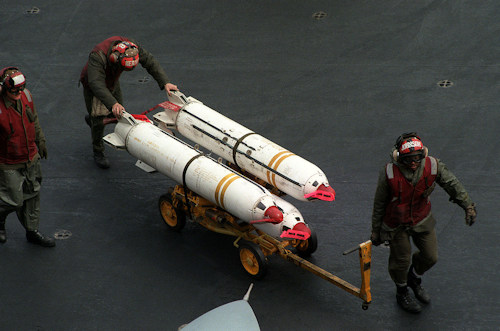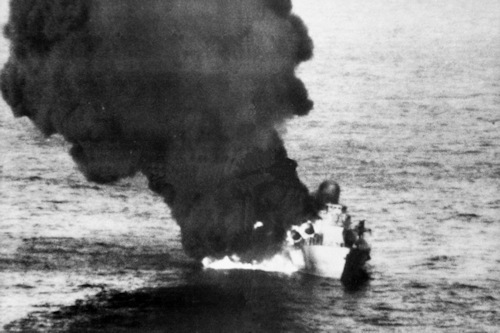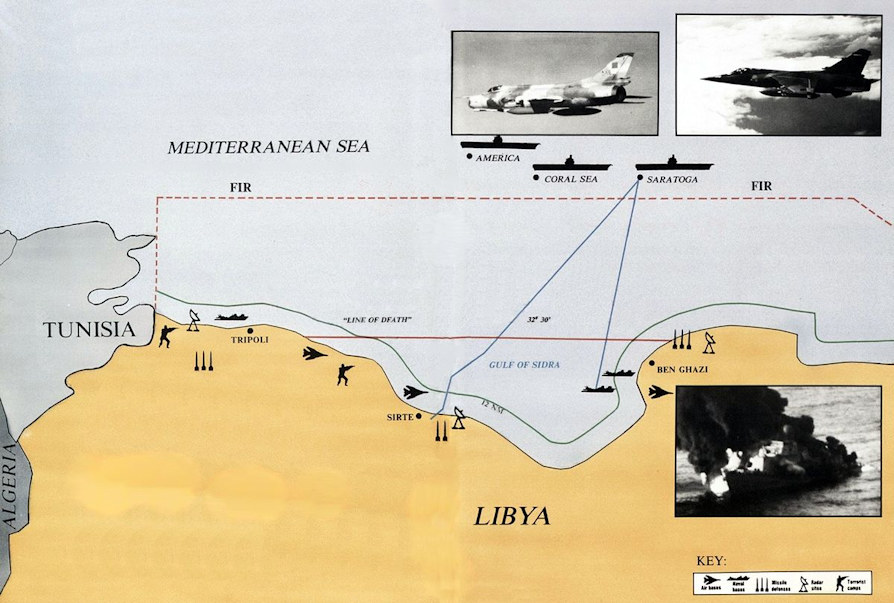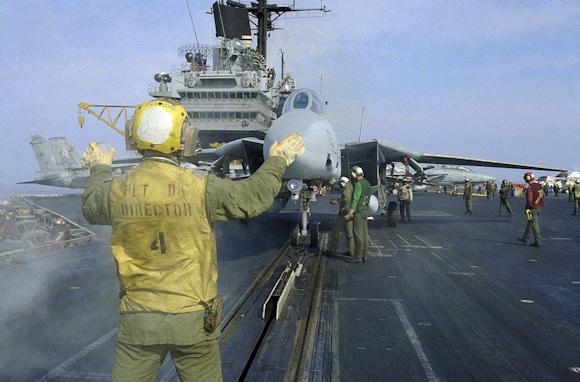The story of the 18 seamen from Mazara del Vallo, kidnapped by the Haftar coast guard on 1 September while fishing about 35 miles from Benghazi, does not yet seem close to a happy conclusion.
As written in a previous article, already in 1973 the regime of Colonel Gaddafi had declared (arbitrarily) the Gulf of Sirte as part of the Libyan inland waters and that therefore the limit of the territorial waters had to start from the end of the gulf and not from the coast, (subsequently declaring the presence of a "death line"), from which foreign fleets were to remain outside.
This decision, of course, was not shared by the international community, even if the nation most directly concerned, Italy, preferred to ignore it, following (within certain limits) the unilateral territorial delimitations due to favorable energy agreements established with Tripoli. of the Colonel.
 However, in 1986 the Reagan administration was determined to deal a heavy blow to the financiers of international terrorism: the choice of the Pentagon fell on the regime of Colonel Gaddafi.
However, in 1986 the Reagan administration was determined to deal a heavy blow to the financiers of international terrorism: the choice of the Pentagon fell on the regime of Colonel Gaddafi.
Libya was certainly not the Arab country that provided more support for terrorism, in fact the responsibilities of Iraq and Syria were much more serious. But the regimes of Saddam Hussein and al-Assad, at the time, were strongly supported by the Soviet Union and intervening against them, therefore, would have triggered a serious international crisis that could also have resulted in a direct confrontation with Moscow.
Gaddafi's Libya, on the other hand, was relatively isolated, looked upon with suspicion by other Arab countries and lacked Soviet protection (even though it was regularly supplied with weapons by the Kremlin).
In January 1986, Colonel Gaddafi provided an excellent pretext for the Americans by proclaiming a death line across the Gulf of Sirte, between Tripoli and Benghazi.
 On March 23 - after the US fleet had repeatedly provoked the Libyan forces in the previous months - three groups of US Navy aircraft carriers, formed by aircraft carriers America, Coral Sea e Saratoga (each group consists of a multi-task aircraft carrier and an escort of six units), they crossed the forbidden zone to carry out air-naval exercises. A flight group consisting of F-14s was fired by ex-Soviet SA-5 surface-to-air missiles, without causing damage as they were designed to hit aircraft at high altitude while the Tomcat they kept relatively low altitudes.
On March 23 - after the US fleet had repeatedly provoked the Libyan forces in the previous months - three groups of US Navy aircraft carriers, formed by aircraft carriers America, Coral Sea e Saratoga (each group consists of a multi-task aircraft carrier and an escort of six units), they crossed the forbidden zone to carry out air-naval exercises. A flight group consisting of F-14s was fired by ex-Soviet SA-5 surface-to-air missiles, without causing damage as they were designed to hit aircraft at high altitude while the Tomcat they kept relatively low altitudes.
For the Americans it was more than enough, so they put the plan into action on March 24 Prairie Fire, already planned previously, which authorized the preventive attack on any Libyan unit, sailing in international waters, which had had a threatening attitude towards the American fleet.
Il Colonel he could not lose face in the face of American provocation, but he knew very well that the forces he faced were beyond the capabilities of the Libyan navy. However, he did get out some ships, mostly Soviet Class missile units Osa, Osa II, armed with SS-N-2A / B anti-ship missiles Styx (with a 500 kg warhead they were capable of severely damaging an 80.000-ton aircraft carrier), Soviet class corvettes Nanuchka and French-class patrol boats Fighter II, armed with Italian-French anti-ship missiles Otomat.

This small naval force met the flight groups of three aircraft carriers that in the meantime had taken off (formed by F-14, F / A-18, A-6 and A-7).
The first Libyan unit to be hit was a patrol boat Fighter II, hit by an AGM-84 anti-ship missile Harpoon (at operational debut) launched from an A-6. The same fate befell a class patrol boat Nanuchka, badly damaged by a Harpoon however he managed to return to port. At the same time, the ground radar systems (near the city of Sirte) were silenced by two A-7s who fired eight AGM-88 anti-radiation missiles at them. Harm, also used for the first time in action.
The same fate befell a class patrol boat Nanuchka (photo), severely damaged by a Harpoon however, it managed to return to port, while another of the same class was sunk the next morning on March 25, again by AGM-84 anti-ship missiles. For the duration of the battle the Soviet SA-2 and SA-5 surface-to-air missile batteries proved their ineffectiveness against US aircraft which, literally, flew a few tens of meters above the sea surface.
The Americans showed that it is not enough to declare, unilaterally, a sea space as territorial waters, but it is also necessary to be able to defend it.

Photo: US Navy / web












